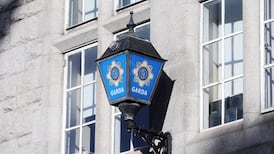For the first time on record the population of Leitrim has shown an increase. It is up 3 per cent since 1996.
Preliminary figures released by the CSO yesterday showed the county now has a population of 25,815, up 758 from the 1996 figure of 25,057. The population consists of 13,307 males and 12,508 females.
Leitrim, by far the lowest populated county in the country, has suffered years of deprivation and emigration through the haemorrhaging of its people to the eastern seaboard and abroad.
However, the tide has been turning in Leitrim in recent years, thanks mostly to the introduction of the Rural Renewal Tax Incentive Scheme which has helped to transform the county through increased housing and commercial and industrial development.
The most recent case is MBNA, the credit card company, who have announced a €32 million expansion of their call centre operation in Carrick-on-Shannon and the creation of an additional 500 jobs over the next five years.
Carrick-on-Shannon is the main growth centre in the county and has increased its population by 516 (24 per cent) to 2,664. Dromahair village, situated on the Sligo border and recognised as a satellite of Sligo town, has also increased its population by 9.8 per cent to 967, as has the south Leitrim town of Mohill with 1,330, up slightly from 1,318 in 1996.
Mr Padraig Glancy, the president of Carrick-on-Shannon Chamber of Commerce and Industry, described the population increase as "a positive upswing due to all the new developments taking place.
"Rural Renewal relief came into effect in 1998/99 and Carrick has increased its population by 24 per cent since that. We can see the growth going forward with MBNA," Mr Glancy said.
Leitrim has suffered from severe population decline since Famine times. The census of 1841 reported a population of 155,297. Every census since then, excluding this year's, has shown a fall in population as many emigrated or relocated to other parts of Ireland.
Although the population increased by 3 per cent since the last census, the 2002 figure remains lower than the 27,035 recorded in 1986. In recent years, the population has been bolstered by an influx of immigrants, mainly German and Dutch, who were attracted by its unspoiled rural environment.









